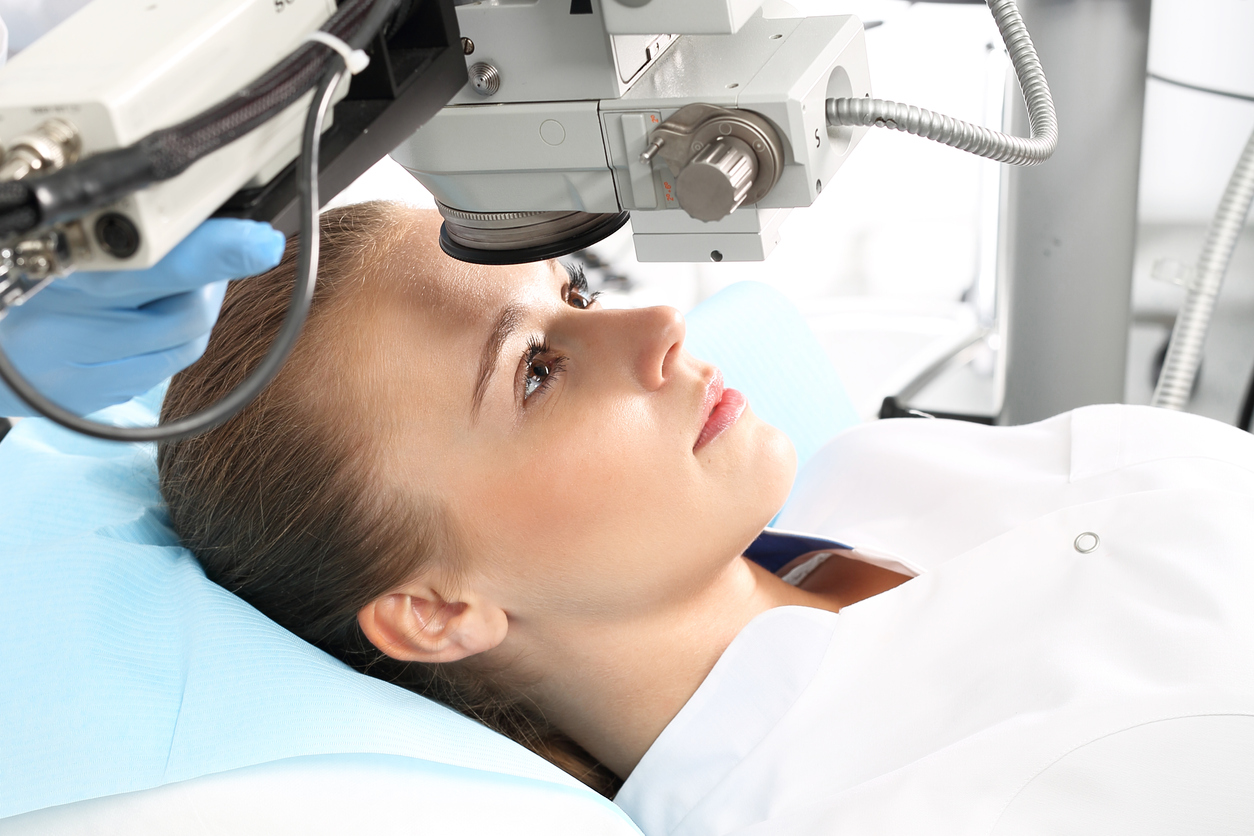Cornea Surgery

Conditions Of The Cornea
Keratoconus: An abnormal shape of the cornea which causes irregular astigmatism and blurred vision. Keratoconus may have a hereditary component and can be a progressive disease requiring monitoring and mapping of the cornea.
Specialty contact lenses can improve the vision of patients with keratoconus as well as cornea transplant surgery.
Pterygium/Pinguecula: These terms describe growths on the surface of the eye. The conjunctiva, which is the “skin” of the eye, can become damaged from sun and UV exposure. Sunglasses with good UV protection are recommended to slow the progression of pinguecula and pterygium. These growths can cause irritation and affect the vision if they grow over the cornea or the “clear” part of the eye. An outpatient surgery to remove these growths may be recommended to improve discomfort, vision and cosmetic appearance of the eye.
Cornea Deposits, Irregular Surface, Nodules: A “Keratectomy” may be recommend to improve the cornea surface. This procedure is a quick, usually in office procedure to help improve the corneal surface and to remove any abnormal deposits that have grown on the normally clear cornea.
Conditions Of The Cornea
Keratoconus: An abnormal shape of the cornea which causes irregular astigmatism and blurred vision. Keratoconus may have a hereditary component and can be a progressive disease requiring monitoring and mapping of the cornea.
Specialty contact lenses can improve the vision of patients with keratoconus as well as cornea transplant surgery.
Pterygium/Pinguecula: These terms describe growths on the surface of the eye. The conjunctiva, which is the “skin” of the eye, can become damaged from sun and UV exposure. Sunglasses with good UV protection are recommended to slow the progression of pinguecula and pterygium. These growths can cause irritation and affect the vision if they grow over the cornea or the “clear” part of the eye. An outpatient surgery to remove these growths may be recommended to improve discomfort, vision and cosmetic appearance of the eye.
Cornea Deposits, Irregular Surface, Nodules: A “Keratectomy” may be recommend to improve the cornea surface. This procedure is a quick, usually in office procedure to help improve the corneal surface and to remove any abnormal deposits that have grown on the normally clear cornea.

Cornea Transplant Surgery
Partial Transplant: Conditions in which the back layer of the cornea (endothelial cells) are losing their function. The cornea as a result can become swollen and affect the vision. Sodium chloride drops may help with this swelling in certain patients. If the corneal cells have lost significant function, a partial cornea transplant surgery may be recommended to improve visual outcomes.
Full Transplant: When the cornea has become scarred from prior infection, trauma, or other diseases the vision can be greatly limited. The cornea- which allows light into the eye- may be replaced with new clear tissue (cornea transplant). This procedure is an approximately 1-hour outpatient surgery but requires maintenance of the new transplant with regular follow-up to maximize success.

